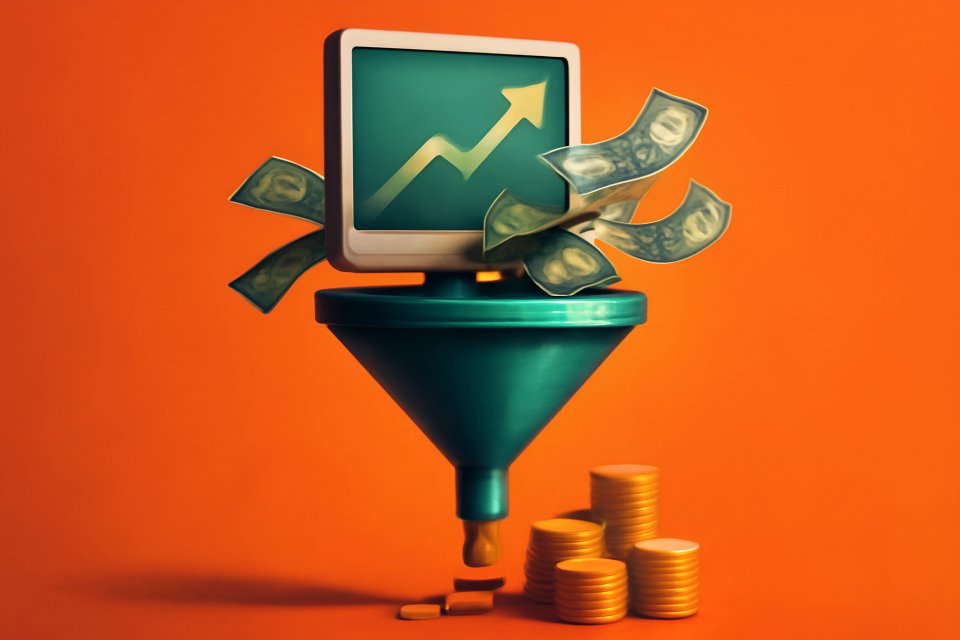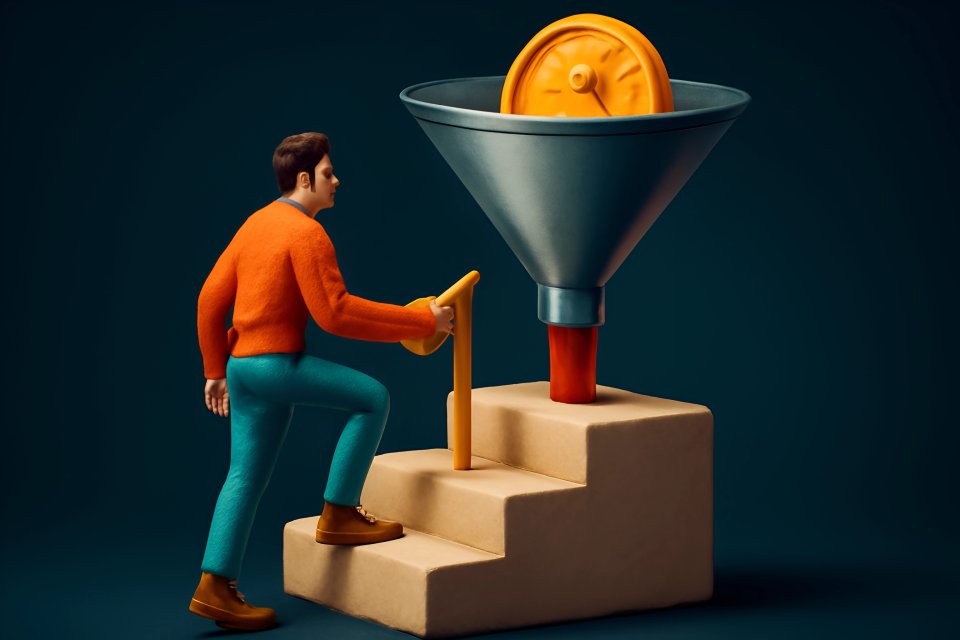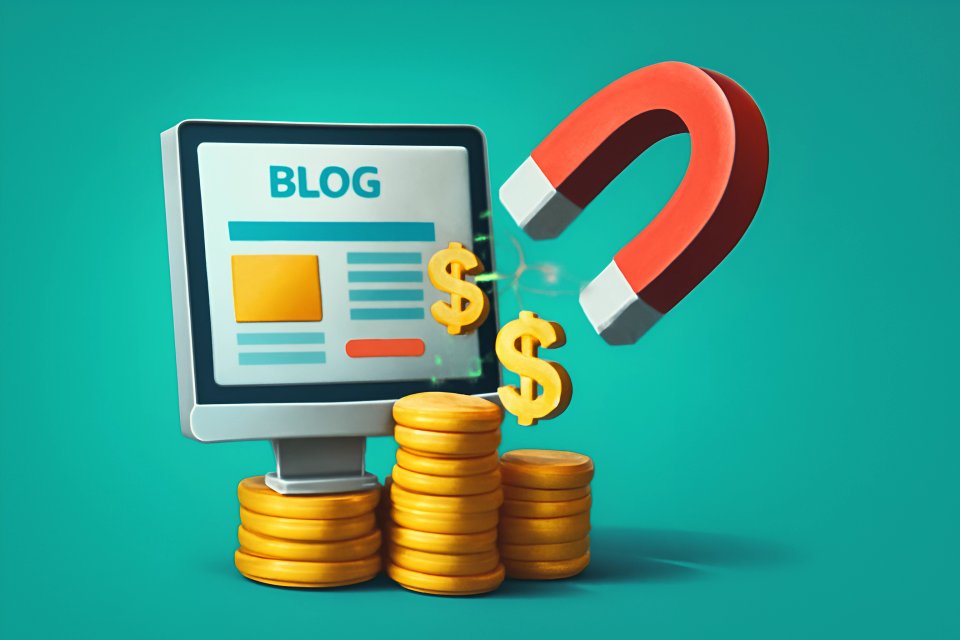
Are you pouring hours, sweat, and maybe even a few tears into creating amazing content? You see the likes, the views, the occasional share. But when you look at your bottom line – your email list, your sales, your affiliate clicks – does it feel like you're shouting into a void? You're not alone in this frustrating cycle.
Many creators master the art of engagement, drawing eyes and sparking conversations. Yet, they stumble when it comes to translating that buzz into tangible results, the kind that actually builds their income streams and fuels their dreams. It's the classic content creator's dilemma: plenty of applause, but an empty tip jar. This isn't just about vanity metrics; it's about survival and growth in the competitive online space.
But what if you could bridge that gap? What if every piece of content you crafted was a magnet, not just for attention, but for action? This guide is your roadmap. We'll show you exactly how to create engaging content that converts, transforming your audience from passive observers into active subscribers, loyal customers, and enthusiastic advocates who take the specific actions you desire. For ambitious individuals like you, building side hustles or full-fledged online ventures, content that converts isn't just a nice-to-have; it’s the non-negotiable engine for your financial freedom. Learning how to create engaging content that converts is a game-changer for any online entrepreneur, and we're here to show you the way.
The Content Creator's Dilemma - Engagement vs. Conversion
So, you've got people liking your posts, maybe even sharing them. That feels good, right? But does "good feeling" pay the bills or grow your business? The truth is, high engagement without conversions can often indicate misaligned audience targeting or weak calls to action, as Cooler Insights points out. It's like having a packed open house but no one makes an offer on the property.
The digital landscape is littered with viral sensations that fizzled out because they couldn't turn fleeting fame into sustainable income. Engagement metrics are valuable, offering insights into audience resonance, but they are not the end goal if you're serious about earning. As highlighted by SEO.co, engagement efforts often require months or even years to yield substantial results, but they build a foundation for long-term, compounding returns when paired with smart conversion strategies.
This guide is about shifting your mindset from merely chasing likes to strategically engineering action. We'll explore how to understand your audience on a deeper level, craft narratives that stick, optimize for search engines with conversion in mind, and design calls-to-action that are impossible to ignore. It's time to make your content work harder and smarter for you.
Foundation First: Understanding Your Audience & Their Conversion Journey
Want to create content that truly converts? Then you absolutely must know who you're talking to. Not just their age or location, but their deepest fears, their burning desires, their secret ambitions. This is the bedrock upon which all successful conversion-focused content is built.
Why "Know Your Audience" is Critical for Conversion
Going beyond basic demographics is paramount. You need to understand their pain points – what keeps them up at night? What problems are they desperately trying to solve? According to Salesforce, a detailed buyer persona framework should include motivations and challenges, not just surface-level data. This deep understanding allows you to craft messages that resonate on an emotional level, making your audience feel seen, understood, and, crucially, motivated to act.
When your content speaks directly to their specific needs and aspirations, it doesn't just engage; it persuades. It positions you not just as a content creator, but as a solution provider, a trusted guide. This connection is what transforms a casual reader into a loyal follower, and a follower into a customer.
TheEarnist Tip: Take the time to create an "Ideal Reader/Customer Persona" for your specific niche. Give them a name, a backstory, a list of challenges, and goals. For instance, "Side Hustle Sam" might be a 30-year-old professional feeling unfulfilled in his day job, looking for ways to earn extra income through online ventures but feeling overwhelmed by where to start. Content tailored to Sam's specific anxieties and goals will be far more effective.
Mapping Content to the Conversion Funnel (TheEarnist Style)
Ever wonder how a casual browser becomes a paying customer? It's rarely a single leap; it's a journey. Understanding this "conversion funnel" is key to creating content that meets your audience where they are and gently guides them to where you want them to be. Think of it as a series of strategic steps, each requiring a different type of content.
Lucidchart breaks down the content marketing funnel into key stages like awareness, evaluation (or interest/engagement), conversion (or decision), and delight (or action). For TheEarnist audience, we can adapt this to be super practical:
| Funnel Stage | Purpose | Content Examples |
|---|---|---|
| Awareness | Attract new eyes, introduce your brand | SEO-driven blog posts, engaging social media updates, introductory videos |
| Interest/Engagement | Educate, build trust, showcase expertise | In-depth guides, tutorials, case studies, valuable email newsletters, webinars |
| Decision | Help them choose you or your recommendation | Product reviews, comparison posts, service pages, detailed product demos |
| Action (Conversion) | Drive the specific desired outcome | Clear CTAs on landing pages, sales pages, opt-in forms for lead magnets |
By mapping your content to these stages, you ensure you're providing the right information at the right time. Someone just becoming aware of a problem needs different content than someone ready to make a purchase. Understanding the stages of content conversion strategies means you're not just throwing content out there; you're strategically nurturing leads. This targeted approach dramatically increases the likelihood of conversion because you're aligning your message with their current mindset and needs.
Crafting Irresistibly Engaging Content (The "Hook")
Once you know your audience and their journey, it's time to create content that doesn't just inform, but captivates. This is where the magic happens, where you forge a connection so strong that taking the next step feels like the most natural thing in the world. How do you do that? You start with a powerful hook.
The Power of Storytelling for Connection & Persuasion
Humans are wired for stories. Forget dry facts and figures for a moment; what truly grabs attention and sticks in the memory is a compelling narrative. Think about it: are you more likely to remember a list of product features or the story of how that product changed someone's life? WebFX highlights how brands like Warby Parker use the founder's personal struggle to build a relatable brand mission, creating an instant connection.
Weave narratives into your content. Share your own journey, your struggles, your "aha!" moments, and your successes. For instance, a post titled "My First Affiliate Sale Story: From Zero to $50 in 24 Hours" is far more compelling than "How to Make Affiliate Sales." Authenticity builds trust, and trust is a cornerstone of conversion. When your audience sees themselves in your story, or aspires to your results, they're more likely to listen to your recommendations.
Don't just tell any story; tell stories that illustrate the transformation your audience desires. Show them the "before" and the "after." Let them feel the frustration of the problem and the elation of the solution. This emotional journey is what makes your message persuasive and unforgettable.
Delivering Unmistakable Value
What's the one question every reader subconsciously asks? "What's in it for me?" If your content doesn't answer that question quickly and clearly, you've lost them. Every single piece you publish must offer unmistakable value, solving a specific problem or answering a burning question for your audience.
This isn't about churning out generic fluff; it's about providing actionable advice, insightful perspectives, or unique solutions. Common Ninja emphasizes that value-driven content prioritizes education or entertainment over direct promotion, which in turn builds long-term loyalty. Focus on "how-to" content that empowers your reader to achieve a tangible result.
TheEarnist Tip: Every piece of content should offer a clear takeaway or solution your reader can implement immediately. Ask yourself: "If my reader only remembers one thing from this, what should it be? And what can they do with it?" This focus on utility is what keeps them coming back for more and positions you as an indispensable resource.
Formatting for Readability & Skim-ability
You could have the most valuable, story-driven content in the world, but if it's presented as a giant wall of text, guess what? Most people won't read it. In our fast-paced digital age, attention spans are short. Your content needs to be easy on the eyes and even easier to digest.
Break up your text with short paragraphs – ideally one to three sentences long. Use clear, descriptive headings (like H3s and H4s you're seeing here) to guide the reader through your content. Employ bullet points or numbered lists for steps or key takeaways, and use bold text to emphasize crucial points. This isn't just about aesthetics; it's about respecting your reader's time.
Good formatting makes your content more approachable and allows readers to skim for the information most relevant to them. This improved user experience keeps them on your page longer, which is not only great for engagement but also sends positive signals to search engines like Google, potentially boosting your SEO. Make it easy for them to get the gold.
Leveraging Visuals & Multimedia
Want to make your content pop and stick? Don't just rely on words. Images, infographics, videos, and even audio clips can dramatically increase engagement and understanding. Our brains process visuals much faster than text, making them powerful tools for conveying information and emotion.
You don't need a Hollywood budget to create compelling visuals. High-quality stock photos, simple infographics created with tools like Canva, or even short, authentic videos filmed on your smartphone can make a huge difference. Think about what would best illustrate your point: a graph to show data, a screenshot for a tutorial, or a friendly face in a video to build trust. According to SEO.com, pages incorporating videos can attract up to 70% more organic traffic, a testament to the power of multimedia.
The key is relevance and quality. Ensure your visuals add value and are well-integrated into your content. A striking image can stop a scroller in their tracks, while a clear tutorial video can explain a complex process far better than text alone. Experiment with different formats to see what resonates most with your audience.
Encouraging Interaction
Content shouldn't be a monologue; it should be a conversation. The more you can encourage your audience to interact with your content and with each other, the more engaged they'll become, and the stronger your community will grow. This sense of belonging is a powerful motivator.
Actively invite interaction. Ask thought-provoking questions at the end of your posts. Run polls on social media related to your content topics. Encourage comments and make an effort to respond thoughtfully. When readers feel heard and valued, they are more likely to become loyal followers and advocates for your brand.
Building a community around your content transforms passive consumers into active participants. This not only boosts engagement metrics but also provides invaluable feedback and insights into what your audience truly wants and needs. These interactions are goldmines for future content ideas and for understanding the language your audience uses, which you can then mirror in your copy for even greater impact. These are practical engaging content tips you can use today to foster a more vibrant and responsive audience.
Optimizing for Conversions: Turning Engagement into Action (The "Ask")
You've hooked them with engaging content. They know you, they like you, they trust you. Now what? This is the critical juncture where you transition from building rapport to driving action. It's time for "The Ask."
Defining Your Conversion Goals – What Do You Want Them to Do?
Before you can optimize for conversions, you need crystal clarity on what a "conversion" actually means for you and for that specific piece of content. Is it an email sign-up? An affiliate link click? A product purchase? A service inquiry? Or perhaps downloading a free resource? Without a defined goal, your calls to action will be vague and ineffective.
Each piece of content should ideally have one primary conversion goal. Trying to get readers to do too many things at once often results in them doing nothing at DALL·E. TheEarnist Angle here is crucial: align your content goals directly with your income-generation strategy. If your aim is to grow your email list to nurture leads for a future course launch, then your primary conversion goal for many blog posts will be an email opt-in.
Be specific. Instead of just "increase engagement," aim for "get 50 new subscribers to my weekly newsletter from this blog post." This clarity will guide every element of your content, from the headline to the final call to action, ensuring everything works in concert to achieve that specific outcome.
Crafting Compelling Calls-to-Action (CTAs)
Your Call-to-Action is arguably the most important part of your conversion strategy. It's the bridge between engagement and action. A weak or unclear CTA can leave your audience hanging, unsure of what to do next, even if they loved your content.
Your CTAs must be crystal clear. Tell them exactly what you want them to do. But don't just command; entice. Make your CTAs benefit-oriented. Instead of a bland "Download Now," try something like Download Your FREE Guide to Tripling Your Affiliate Income!. Outbrain emphasizes using action verbs and highlighting value in CTAs, warning against generic phrases like "Learn More" that lack specific motivation.
Consider incorporating urgency or scarcity when it's appropriate and ethical (e.g., "Limited spots available!" or "Offer ends Friday!"). Placement matters too: include CTAs within your content, at the end of your post, in your sidebar, or even as well-designed, non-intrusive pop-ups. And don't forget design – make your CTAs stand out visually with contrasting colors and clear button text. A/B testing different CTAs is a smart move to see what resonates best.
Building Trust & Credibility – The Foundation of Conversion
People take action when they trust the source. You can have the most engaging content and the most compelling CTA, but if your audience doesn't trust you, they won't convert. Trust is the invisible currency of the internet, and it's built over time through consistency, transparency, and proof.
Showcase your expertise authentically. Share testimonials from satisfied customers or readers. Display social proof, like the number of subscribers or positive reviews. Case studies that demonstrate real-world results can be incredibly persuasive. If you're involved in affiliate marketing, transparency is non-negotiable – always disclose your affiliate relationships clearly and honestly.
Every piece of content is an opportunity to reinforce this trust. Be reliable, deliver on your promises, and always prioritize your audience's best interests. When they believe you genuinely want to help them succeed, they'll be far more receptive to your recommendations and calls to action. This foundation of trust makes the "ask" feel less like a sales pitch and more like helpful advice from a credible friend.
Landing Page Essentials (Even for Blog Posts)
Think of every important piece of content, especially one designed for a specific conversion, as a mini-landing page. While a dedicated landing page is often ideal for paid campaigns, your blog posts can be powerful conversion tools if structured correctly. The goal is to guide the reader smoothly towards your primary call to action with minimal distractions.
This means ensuring your blog post is highly focused on the topic and the solution you're offering. Content Whale suggests that conversion-focused content marketing often involves optimizing landing pages with minimal distractions and targeted CTAs. Remove or minimize sidebar clutter, unnecessary links, or competing calls to action that could pull the reader away from your main objective for that page.
Ensure the journey from your content to the CTA is seamless. If your CTA is to download a guide, the content leading up to it should clearly explain the benefits of that guide and why it's essential for the reader. Effective content conversion strategies start with clear CTAs, but they are supported by a focused environment that makes taking that action easy and logical.
SEO for Engagement AND Conversions: Getting the Right Eyes on Your Content
Creating amazing, conversion-focused content is half the battle. The other half? Ensuring the right people find it. This is where Search Engine Optimization (SEO) becomes your superpower, not just for attracting traffic, but for attracting traffic that's ready to convert.
Keyword Research with Conversion Intent
Not all keywords are created equal. Some attract browsers, while others attract buyers. For content that converts, you need to target keywords that signal "conversion intent." This means going beyond high-volume, general keywords and focusing on phrases that indicate a user is actively looking to solve a problem, make a decision, or complete a purchase.
Moz classifies search intent into categories like informational, navigational, commercial, and transactional. Keywords with commercial intent (e.g., "best tools for email marketing," "TheEarnist review") or transactional intent (e.g., "buy TheEarnist course," "sign up for TheEarnist newsletter") are golden. When you create content around these types of long-tail keywords, like "how to create engaging content that converts," you're meeting users who are further along in their journey and more primed for action.
Use keyword research tools to identify these valuable phrases. Analyze the search engine results pages (SERPs) for your target keywords to understand what kind of content Google already ranks well. This will give you clues about the format and depth required to compete and convert.
On-Page SEO for Humans and Search Engines
Once you've identified your conversion-focused keywords, it's time to weave them naturally into your content. This is on-page SEO: optimizing the elements of your actual page to appeal to both search engines and human readers. Remember, you're writing for humans first, but you need to give search engines the right signals.
Start with an optimized title tag that includes your primary keyword and is compelling enough to earn clicks from the SERPs. Craft a meta description that acts like a mini-advertisement for your content, highlighting the value and including a call to action. Use clear, hierarchical headings (H1, H2, H3) that incorporate your keywords and guide the reader (and search engine crawlers) through your content structure. Don't forget internal linking – linking to other relevant content on your site keeps users engaged longer and helps distribute "link equity," boosting the SEO value of multiple pages.
The goal is to make it easy for search engines to understand what your page is about and for users to find the information they need. This synergy is key to ranking well and attracting qualified traffic. Remember, 75% of users never click past Google’s first page, making strong on-page SEO critical for visibility.
User Experience (UX) Signals that Boost SEO & Conversions
Google increasingly prioritizes user experience (UX) in its ranking algorithms. Why? Because content that provides a great experience is more likely to satisfy users, and Google wants to show its users the best possible results. Key UX signals include page speed (how fast your content loads), mobile-friendliness (how well it displays on smartphones and tablets), and clear site navigation.
But here's where it gets really interesting for conversion: engaging content itself sends positive UX signals. When visitors spend more time on your page (high time-on-page), explore multiple pages (low bounce rate for the right reasons), and interact with your content, these behaviors signal to Google that your content is valuable and relevant. These are the very same factors that indicate a user is resonating with your message and is more likely to convert.
Therefore, by focusing on creating genuinely engaging and valuable content, formatted for readability and enhanced with multimedia, you're not just improving your chances of conversion – you're also boosting your SEO. It's a virtuous cycle where good content practices lead to better rankings, more qualified traffic, and ultimately, more conversions.
The Affiliate Marketing Conversion Engine: A Special Focus
For many Earnists, affiliate marketing is a cornerstone of their monetization strategy. But simply dropping affiliate links into random content won't cut it. To truly make your affiliate efforts convert, your content needs to be strategic, trustworthy, and genuinely helpful.
Creating Content That Sells (Without Being Salesy)
The secret to successful affiliate marketing content? Don't "sell." Instead, help your audience make informed decisions. This means creating honest reviews, in-depth comparison posts that weigh pros and cons, and "best of" lists that curate top solutions for specific needs. Tutorials and guides that demonstrate exactly how to use an affiliate product or service to achieve a desired outcome are incredibly powerful.
TheEarnist Angle is paramount here: focus on promoting products and services you genuinely use, believe in, and can vouch for. Your authenticity will shine through. As Neil Patel advises, "Focus relentlessly on ideal customers, not everyone," and consider "lo-fi" content like authentic videos over overly polished ads to build that crucial trust. When your recommendation comes from a place of genuine experience and a desire to help, it feels less like a pitch and more like a trusted friend sharing a great find.
Remember, your reputation is on the line with every recommendation. Promote quality, solve problems, and your audience will not only convert but will also thank you for it. This approach builds long-term loyalty, which is far more valuable than a quick, one-off commission.
Strategic Affiliate Link Placement
Where and how you place your affiliate links can significantly impact your click-through and conversion rates. Don't just pepper them everywhere; be strategic and contextual. The most effective affiliate links are those that appear naturally within the flow of your content, precisely when the reader is considering a solution that the product offers.
Contextual links, where the anchor text clearly indicates what the reader will find (e.g., "You can check out my favorite email marketing tool, [Affiliate Product Name], here"), tend to perform well. Consider creating dedicated resource pages that list all the tools and services you recommend, categorized for easy navigation. Product boxes or comparison tables with clear calls to action and affiliate links can also be highly effective, especially in review or "best of" posts.
And critically: always ensure clear disclosure. Transparency is not just an ethical requirement; it builds trust. Let your audience know that you may earn a commission if they purchase through your links, at no extra cost to them. Most readers appreciate this honesty.
Tracking and Optimizing Affiliate Performance
You can't improve what you don't measure. To maximize your affiliate earnings, you need to track your performance and continuously optimize your strategies. Most affiliate programs provide dashboards with data on clicks, conversions, and earnings. Pay close attention to these metrics.
Use unique tracking IDs if you're promoting the same product in multiple places (e.g., one ID for a blog post link, another for an email link). This helps you identify which content and placements are driving the most conversions. Analyze your click-through rates (CTRs) on affiliate links and your conversion rates (the percentage of clicks that result in a sale). Shopify Community discussions often emphasize the importance of quality collateral and landing page optimization for affiliate traffic, which ties directly into tracking what works.
If a particular piece of content is getting a lot of traffic but few affiliate clicks or conversions, it's time to investigate. Is the link clearly visible? Is the call to action compelling? Is the product still a good fit for the audience of that content? Continuous analysis and iteration are key to turning your affiliate content into a reliable income stream.
Measure, Analyze, Iterate: The Path to Continuous Improvement
Creating content that converts isn't a "set it and forget it" task. It's an ongoing process of learning, adapting, and refining. By diligently measuring your results, analyzing the data, and iterating on your approach, you can continuously improve your content's effectiveness and boost your conversions over time.
Key Metrics to Track
To understand how your content is performing, you need to track the right metrics. These can generally be divided into engagement metrics and conversion metrics. Both provide valuable insights.
For Engagement, look at:
- Time on Page: How long are people staying to read your content?
- Scroll Depth: How far down the page are they scrolling?
- Bounce Rate: What percentage of visitors leave after viewing only one page? (A high bounce rate can be bad, but for some content, it might mean they found their answer quickly).
- Comments & Shares: Are people interacting with and spreading your content?
For Conversion, focus on:
- Click-Through Rates (CTRs) on CTAs: What percentage of people who see your call to action actually click it? Pipedrive notes that a low CTR, for example, 1.5%, might indicate weak headlines or visuals needing improvement.
- Conversion Rates: Of those who click, how many complete the desired action (e.g., sign-ups per visit, purchases per click)? The formula for CTR is often given as
(Total Clicks / Total Impressions) × 100%. - Lead Quality: Are the leads you're generating a good fit for your offers?
- Return on Investment (ROI): Ultimately, is your content generating more revenue than it costs to produce (if applicable)?
Tools for Analysis
Fortunately, you don't have to track these metrics manually. Numerous tools can help you gather and analyze data effectively. Google Analytics is an indispensable free tool for understanding website traffic, user behavior (check out the behavior flow reports), and tracking goal completions.
Most email marketing platforms (like Mailchimp, ConvertKit) and social media platforms provide their own analytics dashboards, offering insights into how your content is performing on those specific channels. For more advanced users, heatmap tools (like Hotjar or Crazy Egg) can visually show where users are clicking and scrolling on your pages, revealing areas of high engagement or points of friction. A/B testing tools (like Google Optimize, Optimizely, or built-in features in some platforms) allow you to test different versions of headlines, CTAs, or page layouts to see which performs best.
The key is to choose a few relevant tools that provide actionable insights without overwhelming you with data. Start simple and expand as your needs grow.
The Iterative Process
Data is useless unless you act on it. The final, crucial step is to embrace an iterative process: analyze your metrics, identify what's working and what's not, and then make changes. Don't be afraid to tweak your headlines, experiment with different CTAs, adjust your content structure, or even overhaul entire pieces of content based on what the data tells you.
Perhaps a blog post is getting great traffic but a low conversion rate on its opt-in form. You might test a different lead magnet, rephrase the CTA, or change the form's placement. Maybe a particular storytelling angle resonates incredibly well with your audience, leading to high engagement and shares; lean into that style more often.
This is TheEarnist Mindset in action: learning what truly works for your specific audience and niche is key to "earning smarter," not just harder. Continuous improvement is the path to mastering content that not only engages but consistently converts, driving your online venture towards greater success.
Conclusion: Your Content is Your Most Powerful Asset
You've journeyed through the essentials of transforming your creative efforts into tangible rewards. Creating engaging content that converts is not some mystical art; it's a learnable, strategic skill. It's a powerful blend of deeply understanding your audience, crafting valuable and compelling narratives, optimizing with precision, and committing to continuous learning and adaptation.
This isn't just about theory. It's about empowering you with actionable steps you can implement today to see real, measurable results in your online ventures, your side hustles, and your journey towards financial independence. You have the power to turn your words, your videos, your creations into engines of growth.
So, what's the very next step you'll take? What's one strategy from this guide you'll implement this week to make your content work harder for you? Share your thoughts and commitments in the comments below – we'd love to hear your plans! And if you're looking for more insights on building a successful online income, consider exploring how to start launching your own profitable venture, even on a budget. Remember, the ability to create content that truly converts is fundamental to achieving the freedom and success you deserve, all on your own terms. Go make it happen!
















